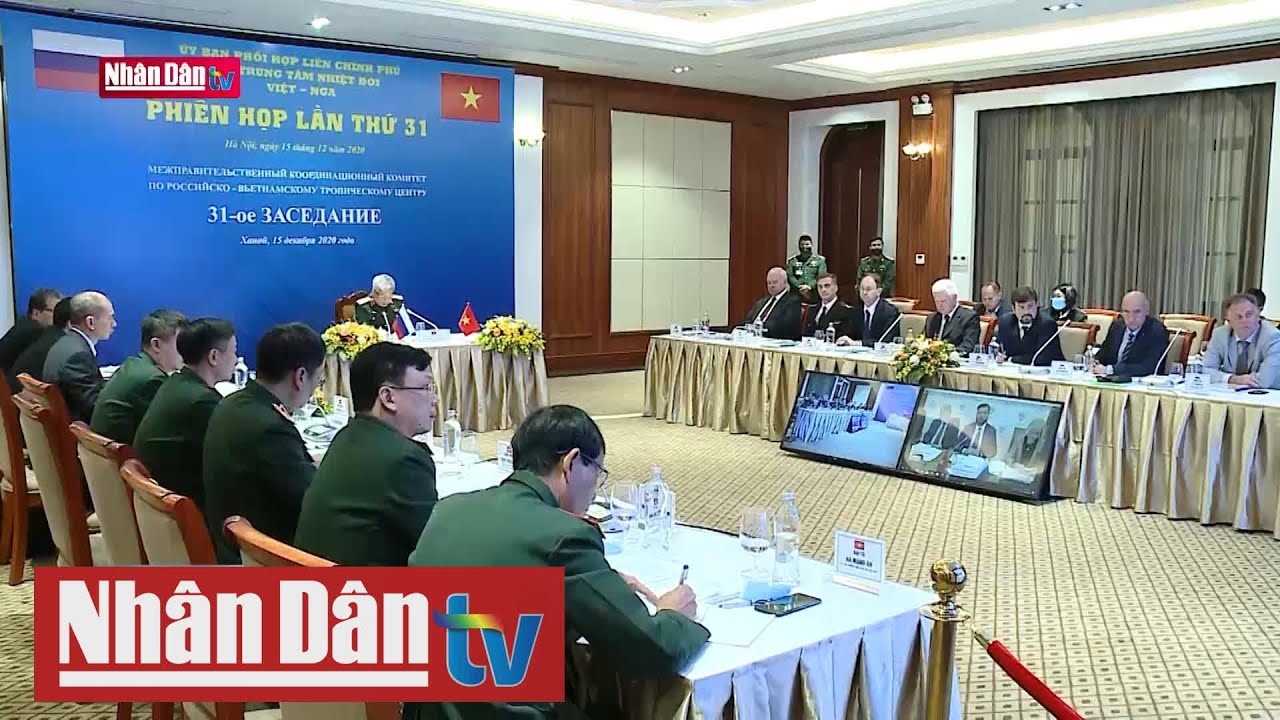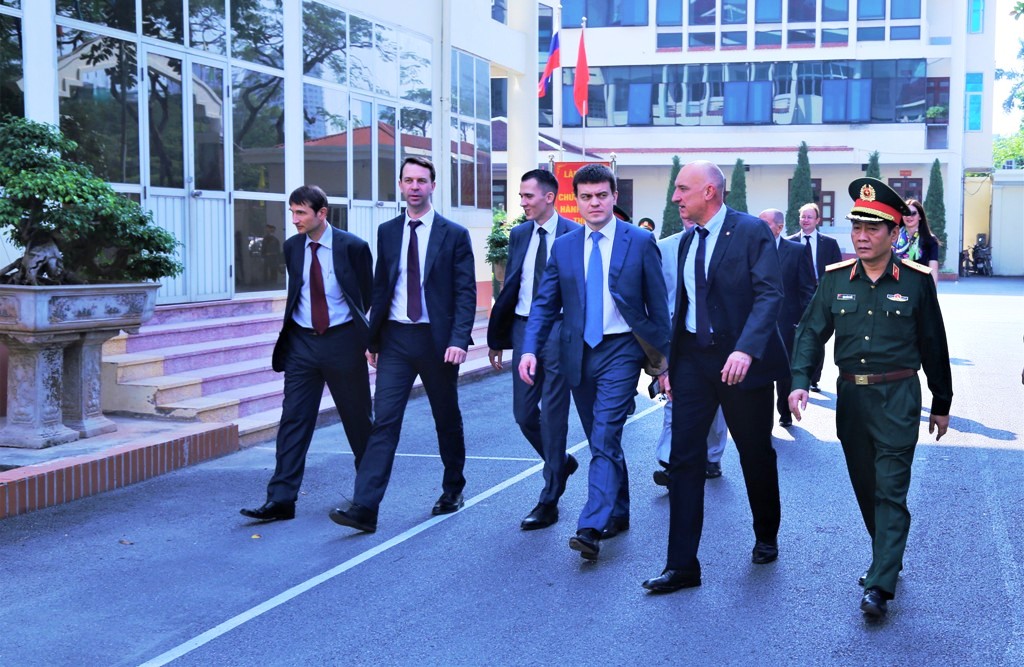Joint Vietnam-Russia tropical science and technology research center: 35 years of building and developing capacity in environmental monitoring, analysis, and environmental impact assessment
11/06/2024The Joint Vietnam-Russia Tropical Science And Technology Research Center, (or Vietnam-Russia Tropical Center), was established based on the Intergovernmental Agreement between Vietnam and the Soviet Union signed on March 7, 1987 (since 1993, the Russian Federation has assumed the responsibilities from the Soviet Union to continue implementing the Agreement). One of the Center's main tasks, as defined in the Agreement and undertaken since its establishment, is to research the ecological consequences of the chemical warfare conducted by the US military in Vietnam.
This task has been concretized and developed by the Center according to the assigned tasks from higher authorities, and aligned with the practical environmental protection needs of the military and the nation. Besides scientific research tasks, the Center focuses on developing service activities related to monitoring and analyzing dioxin. Initially, this involved primarily monitoring, analyzing, and assessing the persistence of dioxin in areas heavily sprayed with Agent Orange/dioxin during the war, conducted by the Analysis Department of the Center. To date, this has evolved into the leading unit in Vietnam for dioxin analysis, as well as analysis of dioxin-like compounds and other persistent organic pollutants (POPs). Additionally, the Center has expanded its environmental service activities, concentrating on areas such as environmental analysis, consulting, and impact assessment. These tasks are not only carried out by the Department of Chemistry & Environment (former Analysis Department) but also involve other units within the Center.
In the field of dioxin analysis, since its establishment, the Center has conducted research to assess the persistence and spread of dioxin in areas heavily sprayed with Agent Orange/dioxin during the war (such as Dong Nai, Binh Duong, Tay Ninh, Song Be, etc.). These studies then were primarily led by the Russian side.
Since 1994, the Vietnamese Side has taken the lead in assessing the persistence of Agent Orange/dioxin at "hotspots" such as Bien Hoa, Da Nang, Phu Cat airports, and several other airbases; participating in tasks under Program 33 and numerous projects and initiatives led by the state, various ministries, and international organizations. Concurrently, the Center has established a dioxin analysis laboratory, trained a team of experts, and researched the application of modern analytical procedures and methods.
Since 2010, the Dioxin Analysis Laboratory has continued to receive substantial investment, with comprehensive and modern facilities. In 2015, the laboratory was accredited by the Bureau of Accreditation (BoA) under the Ministry of Science and Technology, receiving certification for compliance with ISO/IEC 17025:2005 (certificate number VILAS 856). Since then, this capability has been continuously renewed and its scope of accreditation expanded, making it a true area of strength for the Center.
Additionally, the Laboratory has focused on enhancing international cooperation in dioxin research, collaborating with several organizations from Russia, Canada, the United States, and others. Accordingly, the laboratory’s staff has participated in numerous training courses, seminars, and workshops with partners on dioxin analysis. Since 2006, the Laboratory has annually participated in international proficiency testing and cross-checking with reputable laboratories worldwide. The analysis results have shown that 100% of the samples met the required standards, with over 50% rated as excellent. This capability has been highly praised by both domestic and international organizations, underscoring the Center's competence in analyzing these compounds.
As of June 2023, the Center has analyzed approximately 12,000 dioxin samples and over 7,000 samples of dioxin-like compounds, Agent Orange, and other toxic substances. The analysis results have significantly contributed to the overall success of the research program addressing the aftermath of chemical warfare conducted by the U.S. military in Vietnam. Beyond monitoring and analyzing wartime-origin dioxins, the Center has successfully developed capabilities to assess dioxin emissions, dioxin-like compounds, and other POPs originating from industrial and domestic sources, thereby contributing to environmental control and protection in the country.
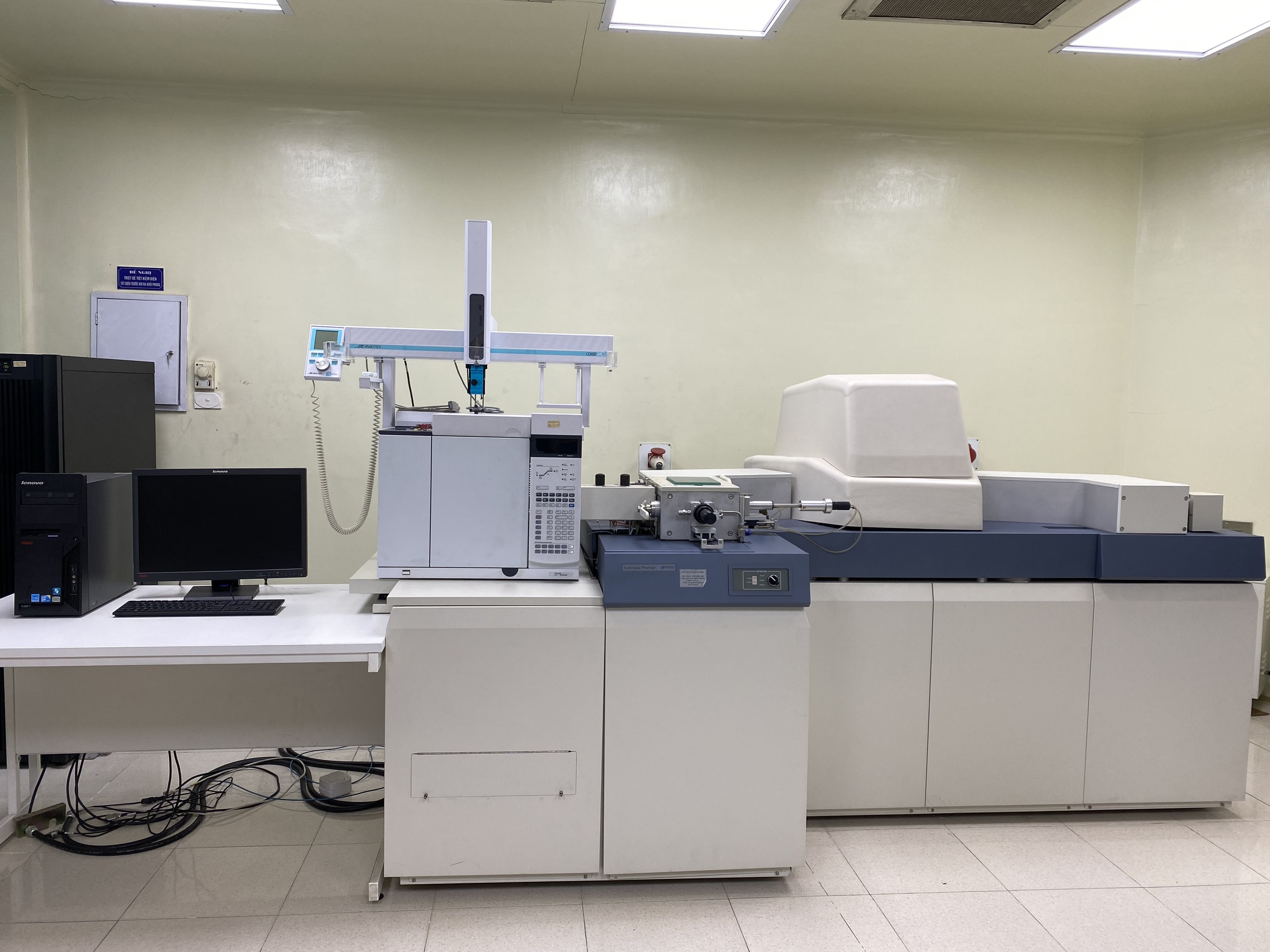
High-Resolution Gas Chromatography/Mass Spectrometry (HRGC/HRMS) system.
In addition to dioxin monitoring and analysis, in recent years, the Center has also focused on building its capabilities in environmental monitoring, analysis, and environmental impact assessment consulting. Currently, the Center has three units certified by the Ministry of Natural Resources and Environment for conducting environmental monitoring services under Decree 127/2014/NĐ-CP, now Decree 08/2022/ND-CP. These units include the Department of Chemistry & Environment (VIMCERT 256 - since 2019), the Tropical Ecology Institute (VIMCERT 278 - since 2021), and the Southern Branch (VIMCERT 300 - since 2022).
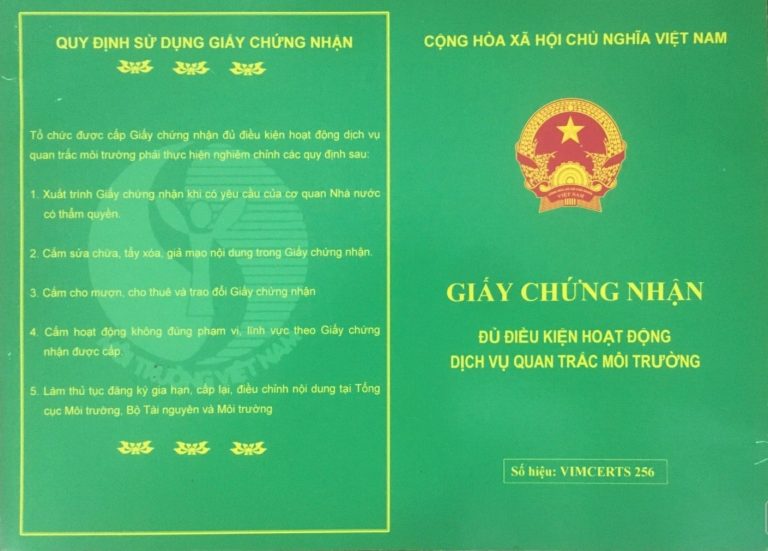
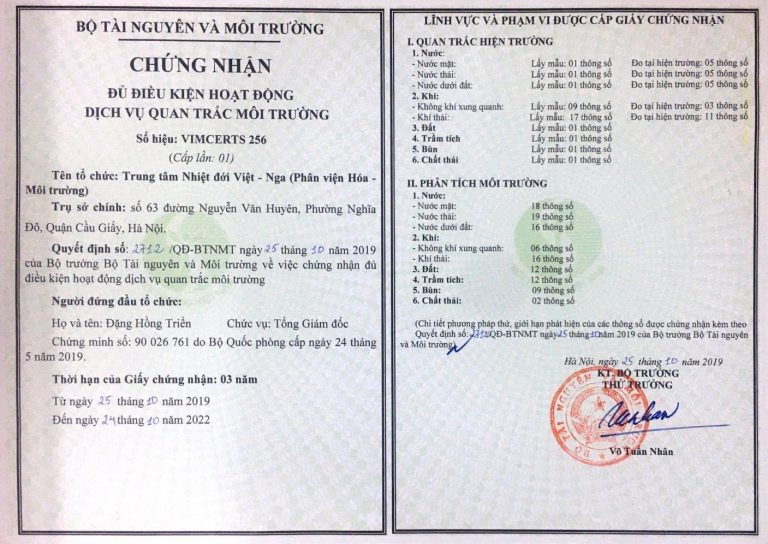
VIMCERT 256 Certification.
VILAS 856 Certification.
After more than 35 years of construction and development, with the continuous efforts of generations of leaders and staff, the Vietnam-Russia Tropical Center has established and effectively implemented capabilities in various environmental services. These contributions have played a significant role in protecting the national environment as well as addressing current global environmental issues.
To see detailed information about the environmental services of VRTC, please visit: (website https://emalab.com.vn/).






